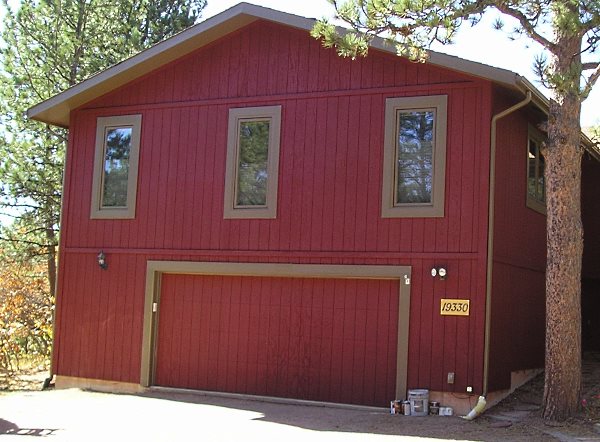Even if you despise your old light fixture and believe that the only alternative is to toss it, you may keep it alive in a cost-effective way. You can display your unique style when you renovate your own fixtures. Simply painting your light fixture may transform it into a fashionable focal point that blends seamlessly into the interior decor of your house for a fraction of the cost.
If you want to give your conventional metal light fixtures a makeover by painting them, you’ll have to deal with a few challenges. Metal is extremely resistant to primer and paint adherence since it is a hard, nonporous surface. If you don’t use a certain sort of etching primer to prepare the fixtures before painting, the paint will peel away quickly. Because metal light fixtures are sleek, you’ll want to utilise a specific application procedure to provide a smooth, professional appearance. You may even want to read a beginner’s guide to painting your home’s exterior.
Outdoor lighting fixtures add a splash of colour to your home, but the weather can degrade its surfaces over time. During the weekend, spray paint them to spruce them up and give them a new appearance. To find out how, keep reading.
- Uninstall the fixtures or tape around them
You must either remove the fixture from its position or mask the adjoining surfaces before painting. If you can’t or don’t want to remove the fixture, make sure you don’t paint the wall to which it’s mounted or any surrounding surfaces. To do this activity, choose a warm, dry day. When surfaces are moist, the humidity is above 80%, the temperature is below 50 degrees, or the piece you’re repainting is directly in the sun, avoid painting.Start by shutting off the fixture’s electricity at the fuse box if you’re going to dismantle it. Using a high-voltage circuit tester, ensure that the power is off. The light fixture may only then be safely removed.You should tape around the fixture to safeguard surrounding surfaces from paint spray if you wish to paint it without moving it from its place. Cover the area where your fixture is fastened to your house’s siding or brick wall with plenty of masking paper to preserve the surface. Use painter’s tape to affix the masking paper to the wall, making sure it covers any brick or siding surrounding the fixture. - Clean the fixture
To remove filth and grime, use a vinegar and water solution or water mixed with an all-purpose cleaner and a scour brush. Clean the fixtures with a bleach and water solution or a professional mould remover if they have mould or mildew. Before painting, a tack cloth can be used to assist take up any particles attached to the surface. Only the outside has to be cleaned, as this is the part which will be repainted. - Sand the fixture to remove old paint
Because the paint will not stick well to rust, the rust, as well as any old, flaking paint, must be removed. Before priming, sandpaper could be used to buff the whole area you’ll be painting, especially if the fixture is merely stained or unpainted metal. However, any previous paint on the fixture must be removed using a chemical paint remover. If you choose the latter, make sure you operate in a well-ventilated place. Scrape off the paint using a paint scraper once it begins to bubble to the surface, and use a scouring pad for locations that are more difficult to reach. Once this process is finished, wipe the surface with a rag. - Apply primer
Apply a metal-specific primer to metal surfaces. Apply two coats for optimal results. When spraying, “back-brush” i.e. paint over just-applied paint before it dries to massage the paint into the surface for improved adhesion and to smooth out any drips. Give at least a day for the primer to dry completely. Before it is totally dry, the primer may not always feel moist or sticky. - Spray paint
It’s now time to start painting. Think about how you would like the final result to appear. Flat, semi-gloss, and high-gloss finishes are available in aerosol paints. Also, consider how the colour will look on the fixtures as well as the best paint colours for your home office, patio décor, and so on.Using a paint sprayer, apply a coat of paint to the surface. Keep the can moving and approximately 8″ to 12″ away from the thing you’re painting to avoid extra paint that might drop. Allowing the layers to dry in between, apply light and even coats of paint until you obtain the desired hue. During the painting process, stop and shake the can at regular intervals to ensure that the colour remains uniform.Allow the fixture to dry completely according to the manufacturer’s instructions. It may be mounted or hung once it has dried. - Reinstall the fixture
Reconnect the electric cables to the circuit wires if you removed your lights to paint them. Twist the wire ends together and secure them with a wire connector to connect each fixture wire to its matching circuit wire. Place the mounting plate on the fixture after pushing the wire into the hole. Reconnect the hardware using a screwdriver. Next, depending on the kind of fixture, attach the fixture shade or shades. Remove all masking materials including painter’s tape.
Conclusion
Give a new lease of life to your outdoor light fixtures by following the above-mentioned tips. They will not only last longer but will also spruce up your outdoor area.


